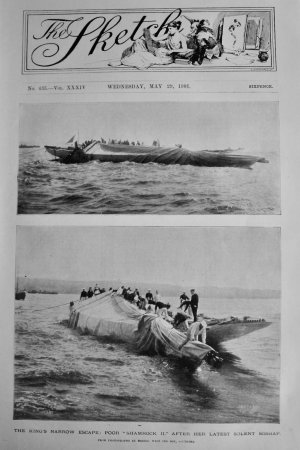flaming
Well-Known Member
Yes, but mostly as a bi-product of being bankrolled by the same people.I think the advertising slogans on the sails may tell us something, but this is now a competition between Formula One motor racing teams as well.
Chris' stuff is great, really, and the history of the cup, and racing in general is endlessly fascinating. The problem is pretending that what someone said over 100 years ago has any bearing on the modern cup.
Neither is it, as many claim, "the F1 of sailing". Not in the sense of how it's run. F1 teams in the modern era generate cash for their owners. America's cup teams consume it. F1 teams have the luxury that the racing is not organised by the team that won last year to their special rules, but is organised by the FIA and Liberty. So they know in advance what the rules are, where the races are etc. And they have fan numbers, TV deals etc. This allows them to sell sponsorship with certainty over multi year deals. The F1 teams have a value and are bought and sold. America's cup teams really don't, and aren't.
We're less than a month from the conclusion of this cup, and we don't currently know where the next one will be, who will be the defender, who the challenger of record, what the boat class will be (though both teams have in theory signed up to use AC75s again) or even, most crucially, when it will be. This causes enormous problems for cup teams, especially ones who are not mostly funded by Billionaires. Right now they're out there trying to use the buzz around the current cup to drum up sponsors for their effort in the next one. But they cannot answer even the most basic of questions - what, where, when. And that's hard when you're looking for a budget of 10s if not hundreds of millions.
And without the money in place, you lose the best people....
Which is why the teams reliant on commercial sponsorship so often fail to make it to their second cycle. And why to be a perennial challenger you really need a tame Billionaire. Since 2000 only team NZ have ever really been the exception, and they've only really done it by winning it. After the disaster and heartbreak of the San Francisco cup in 2013, it took a monumental effort from them to get the funds in place to get to the Bermuda cup in 2017, and then win it. And even as holders now they have had to take the cash from Barcelona rather than host in Auckland.
If they don't win this time round, it's not inconceivable that they won't make the next one. NZ are talking about budget caps, extra racing in the meantime to drum up interest and provide value for sponsors, and a cup as soon as 2026. They have commercial sponsors to keep happy, new sponsors to find. INEOS don't. They don't need to keep sponsors happy if they win, just one man. They don't need a quick turn around. A budget cap doesn't help them. It's not at all out of the question that there isn't another cup until 2027 or even 2028 if INEOS win. With nothing concrete about venue or class announced until late next year. How do you raise sponsor money as NZ if that's the case? How do you keep the team in place, paying their wages?

